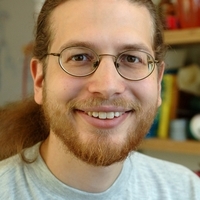-
 Full Conference Pass (FC)
Full Conference Pass (FC)
-
 Full Conference One-Day Pass (1D)
Full Conference One-Day Pass (1D)
-
 Basic Conference Pass (BC)
Basic Conference Pass (BC)
-
 Student One-Day Pass (SP)
Student One-Day Pass (SP)
-
 Experience Pass (EP)
Experience Pass (EP)
-
 Exhibitor Pass (EP)
Exhibitor Pass (EP)
Date/Time: Thursday, December 6th , 11:45am - 12:45pm
Venue: Hall C (4F, C Block)
Speaker(s): Erik Demaine, Massachusetts Institute of Technology, United States of America
Abstract: I like to blur the lines between art and mathematics, by freely moving from designing sculpture to proving theorems and back again. Paper folding is a great setting for this approach, as it mixes a rich geometric structure with a beautiful art form. Mathematically, we are continually developing algorithms to fold paper into any shape you desire; with Tomohiro Tachi, our new Origamizer algorithm enables efficient watertight folding of any polyhedral surface, such as the classic Stanford bunny or Utah teapot. Sculpturally, we have been exploring curved creases, which remain poorly understood mathematically, but have potential applications in robotics, deployable structures, manufacturing, and self-assembly. By integrating science and art, we constantly find new inspirations, problems, and ideas: proving that sculptures do or don't exist, or illustrating mathematical beauty through physical beauty. Collaboration, particularly with my father Martin Demaine, has been a powerful way for us to bridge these fields. Lately we are exploring how folding changes with other materials, such as hot glass, opening a new approach to glass blowing, and finding new ways for paper and glass to interact.
Speaker Bio: Erik Demaine is a Professor in Computer Science at the Massachusetts Institute of Technology. Demaine's research interests range throughout algorithms, from data structures for improving web searches to the geometry of understanding how proteins fold to the computational difficulty of playing games. He received a MacArthur Fellowship as a “computational geometer tackling and solving difficult problems related to folding and bending—moving readily between the theoretical and the playful, with a keen eye to revealing the former in the latter”. He appears in the origami documentaries Between the Folds and NOVA's The Origami Revolution, cowrote a book about the theory of folding (Geometric Folding Algorithms), and a book about the computational complexity of games (Games, Puzzles, and Computation). Together with his father Martin, his interests span the connections between mathematics and art, including curved-crease sculptures in the permanent collections of the Museum of Modern Art in New York, and the Renwick Gallery in the Smithsonian.




